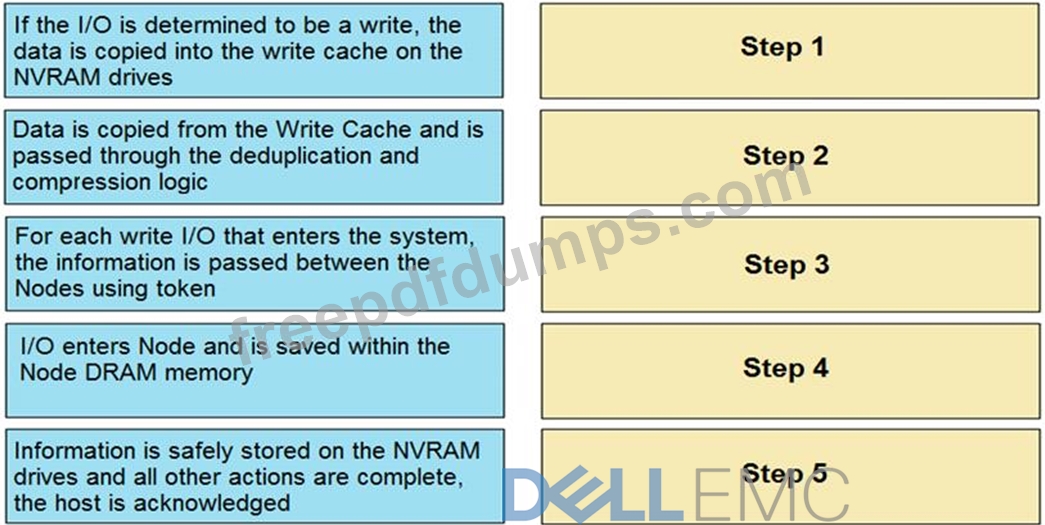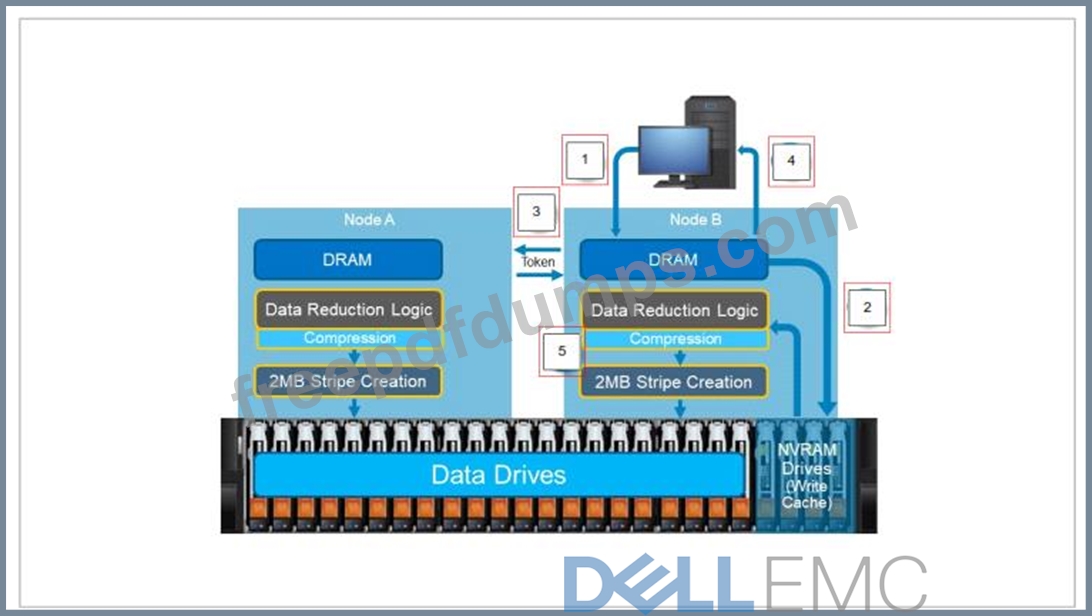DES-1221 Exam Question 51
Which IP addresses are required when adding an appliance to the cluster?
DES-1221 Exam Question 52
How is the upgrade process on a multi-appliance cluster run?
DES-1221 Exam Question 53
Refer to the Exhibit.

A Network administrator is failing to discover a PowerStore T system using the PowerStore Discovery Utility. What might be the issue?

A Network administrator is failing to discover a PowerStore T system using the PowerStore Discovery Utility. What might be the issue?
DES-1221 Exam Question 54
A VM administrator uses their PowerStore user account and noticed they are unable to change their password. Why?
DES-1221 Exam Question 55
Correctly arrange the sequence of the write operation in PowerStore.

Write Operation
The graphic explains the process when the PowerStore receives a write request.

1: Step 1.
In this example, an I/O enters Node B and is saved within the Node
DRAM memory. The I/O is analyzed to determine:
1. What type of I/O it is.
2. What resource it is intended for.
3. The location within the resource being updated or requested.
4. And other metadata information.
2: Step 2.
If the I/O is determined to be a write, the data is copied into the write cache on the NVRAM drives. After the information is stored within the write cache, the information stored within the DRAM memory is considered clean as it no longer has the latest copy of the information. This data then becomes part of the read cache, until it is later replaced in cache by newer or more highly accessed dat
a.
3: Step 3.
For each write I/O that enters the system, the information is passed
between the Nodes using tokens. This operation updates the peer node that a new write has been received and that it has the newest copy of the data. A token includes information about the I/O such as what resource was updated and the address within the resource that was updated. A token also includes information Data Efficiency about the location the I/O was saved to within the write cache. If the peer Node requests that information, the Node can access the data within the NVRAM drives using its own internal channels.
4: Step 4.
After the information is safely stored on the nonvolatile media of the NVRAM drives and all other actions are complete, the host is acknowledged.
5: Step 5.
After the host is acknowledged, data is copied from the Write Cache and is passed through the deduplication and compression logic. The remaining data is then assembled into 2 MB stripes and saved to the back-end storage.

Write Operation
The graphic explains the process when the PowerStore receives a write request.

1: Step 1.
In this example, an I/O enters Node B and is saved within the Node
DRAM memory. The I/O is analyzed to determine:
1. What type of I/O it is.
2. What resource it is intended for.
3. The location within the resource being updated or requested.
4. And other metadata information.
2: Step 2.
If the I/O is determined to be a write, the data is copied into the write cache on the NVRAM drives. After the information is stored within the write cache, the information stored within the DRAM memory is considered clean as it no longer has the latest copy of the information. This data then becomes part of the read cache, until it is later replaced in cache by newer or more highly accessed dat
a.
3: Step 3.
For each write I/O that enters the system, the information is passed
between the Nodes using tokens. This operation updates the peer node that a new write has been received and that it has the newest copy of the data. A token includes information about the I/O such as what resource was updated and the address within the resource that was updated. A token also includes information Data Efficiency about the location the I/O was saved to within the write cache. If the peer Node requests that information, the Node can access the data within the NVRAM drives using its own internal channels.
4: Step 4.
After the information is safely stored on the nonvolatile media of the NVRAM drives and all other actions are complete, the host is acknowledged.
5: Step 5.
After the host is acknowledged, data is copied from the Write Cache and is passed through the deduplication and compression logic. The remaining data is then assembled into 2 MB stripes and saved to the back-end storage.


